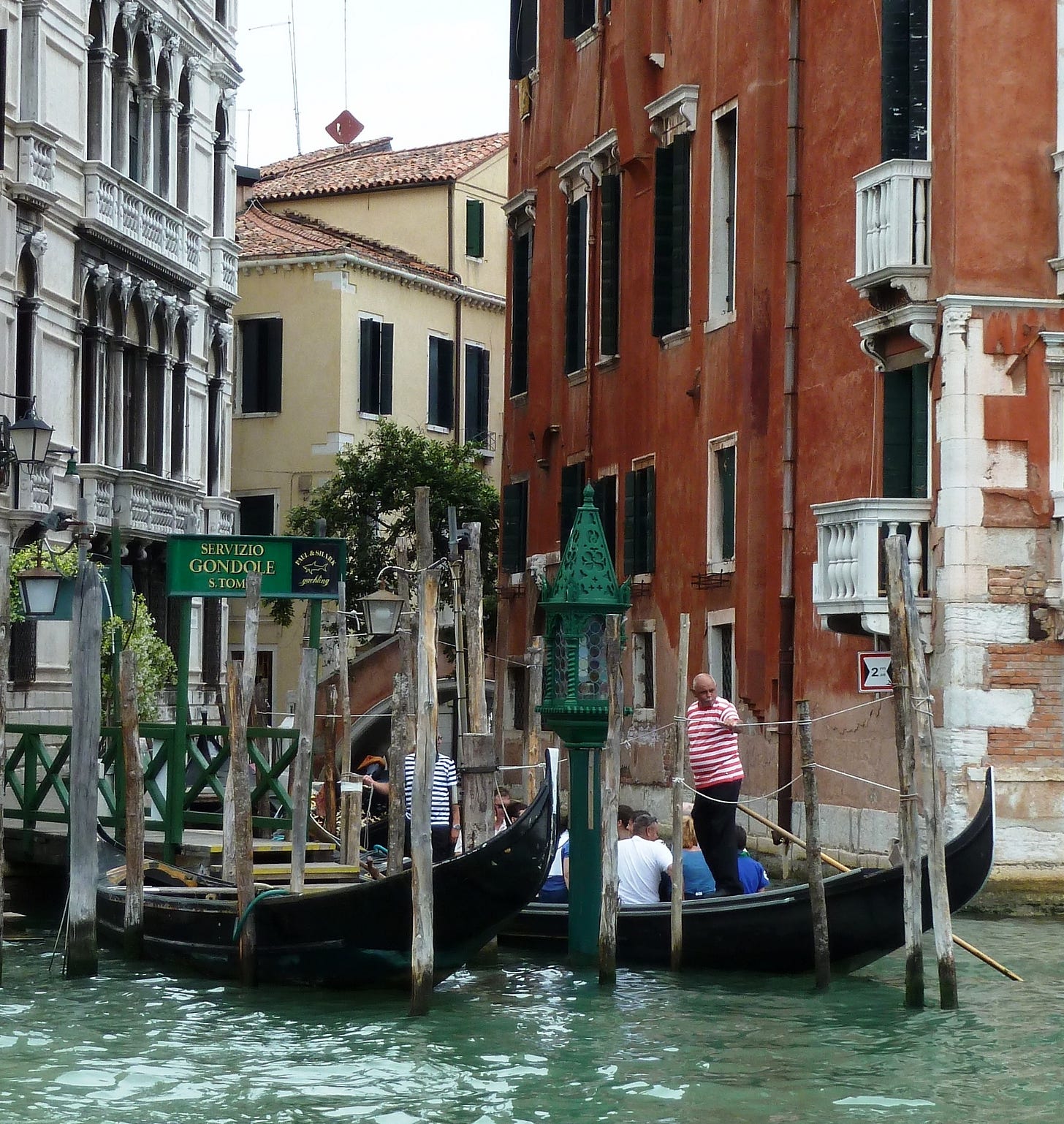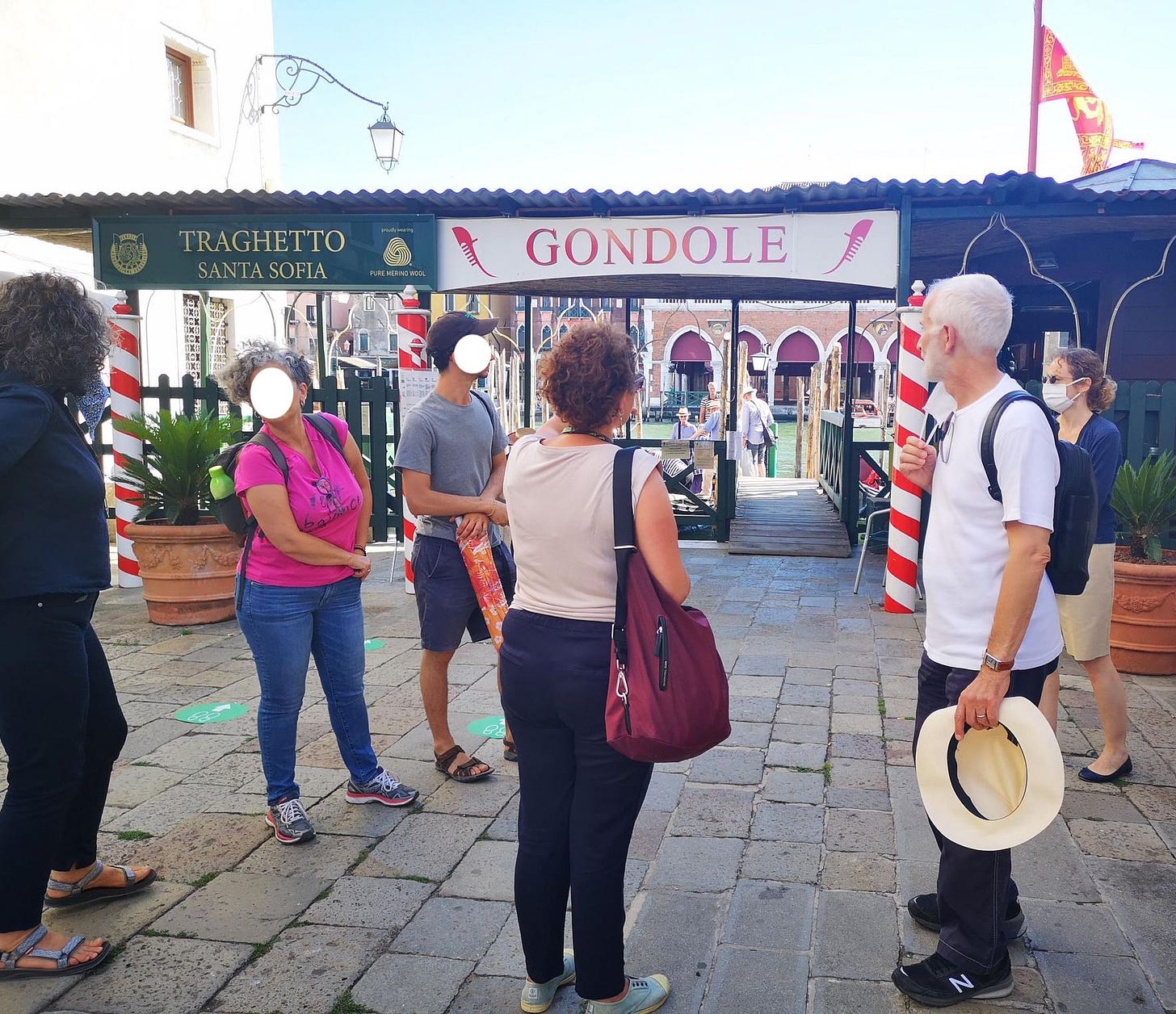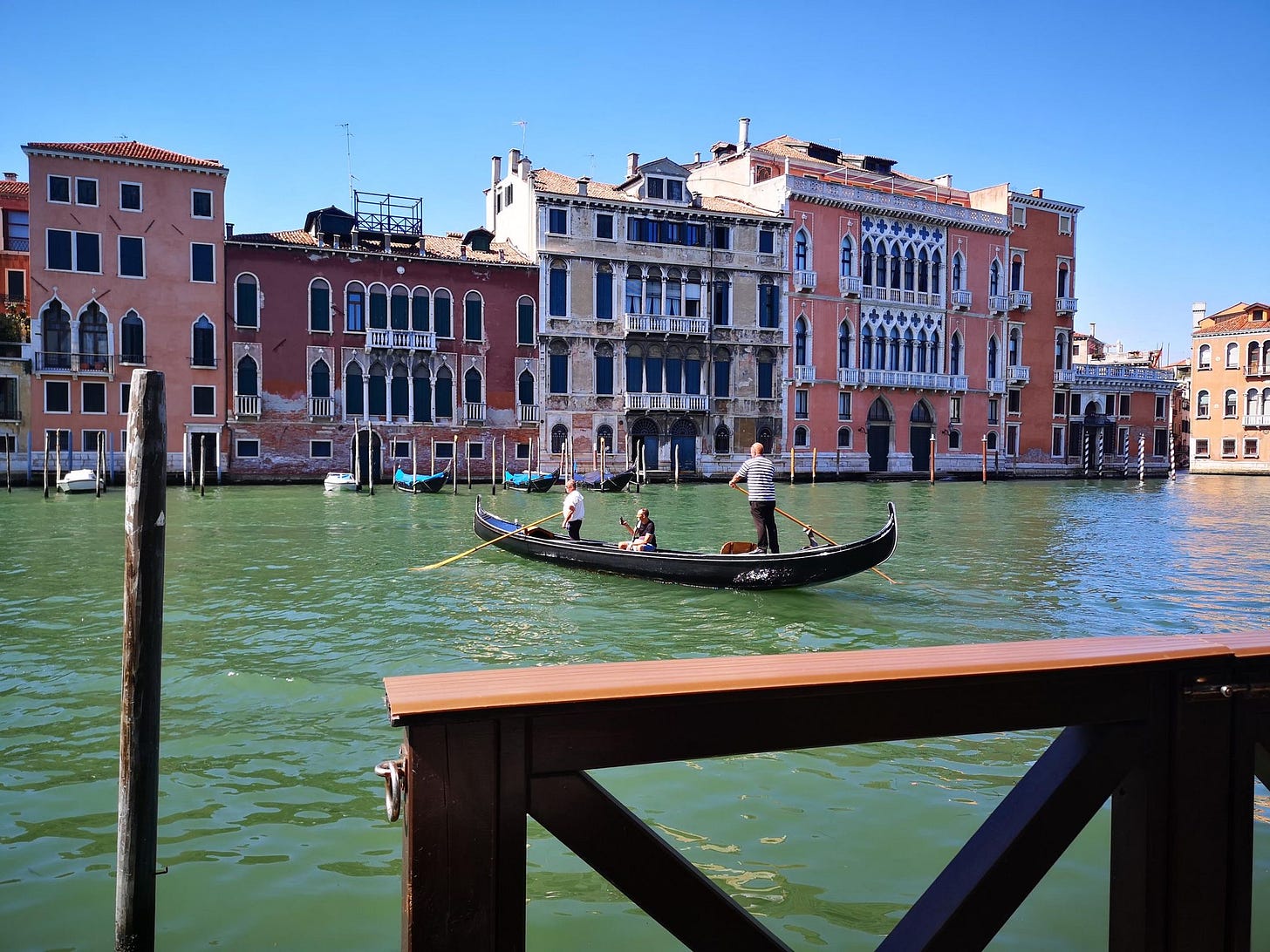Looking across the Grand Canal toward the Rialto fish market, I could see my wife standing in the center of the gondola holding a full sack of groceries in each hand, with our dog standing by her side. The fifty cents she paid for herself and fifty cents for the dog were well worth the price. With only three bridges crossing the canal, it would have been a long walk home otherwise.
Six Venetians and two dogs disembarked at Campo Santa Sofia. I took the bags from Debbie, and the three of us walked home together. The year was 2005, and this was our daily routine.
Gondola vs Traghetto
We still use the traghetti (also known as gondoloni, or big gondolas) frequently as a convenient way to cross the Grand Canal. In fact, Venetians have been using them since the 1300s to save time and energy in getting around Venice. By the 1600s, there were 10,000 gondolas in Venice, primarily used for transportation. Now there are four hundred gondolas for tourists. These are the shiny black crafts with plush red seats usually carrying two to four people on romantic 40-minute trips for 80 to 100 euro. But there are also the traghetti. Although technically not a gondola, they are quite similar.
Also in black, the traghetto is a bit longer than the gondola, and is absent the shiny ornaments. A plank of wood replaces the plush seats, but no matter. Most people stand on the traghetto, as it can take ten to twelve passengers. There are two gondoliers, one in front and one in back, rowing the residents across the canal at five or six locations. The trip usually takes five to ten minutes including embarking, crossing the canal, and disembarking. The current price is two euro for tourists and 70 cents for residents. Dogs sometimes pay full fare but other times ride for free. On our most recent crossing from Dogana, the gondoliers let our dog ride at no cost.

Riding a Traghetto
How do you ride? Just go to one of the traghetto stations (you can see the yellow signs in the calli) and stand on the dock until the gondolier motions for you to board.
Pay him two euro in cash (exact change is appreciated), and step in. Unless you are the only ones to board, it is customary to stand, and to face the front of the boat. To avoid winding up in the canal, you might want to limit your picture taking while standing. Also, avoid sudden movements during the crossing to reduce the chance of knocking a fellow passenger into the water with your backpack. When the traghetto reaches the other side of the canal, one of the gondoliers will help you disembark.
Canine Companions
Dogs seem to enjoy the crossing as well. Some of the oarsmen have canine companions who stay with them throughout the day. Stories abound of dogs who cross the canal by traghetto without their owners every morning and return at the end of the day. Every few days the owner settles up with the gondoliers and pays the pet’s fare.
It may take you a time or two to get your “sea legs” in a traghetto. But once you do, you’ll become addicted to this easy, fun, convenient, and cheap way to take a gondola ride like the Venetians have done for hundreds of years.
For a list of the currently running traghetti and their hours, click here. Our favorites are San Tomà and Santa Sofia.









Love this Barry! Especially the pooch part 🤣
Loved my time in Venice and my gondola ride